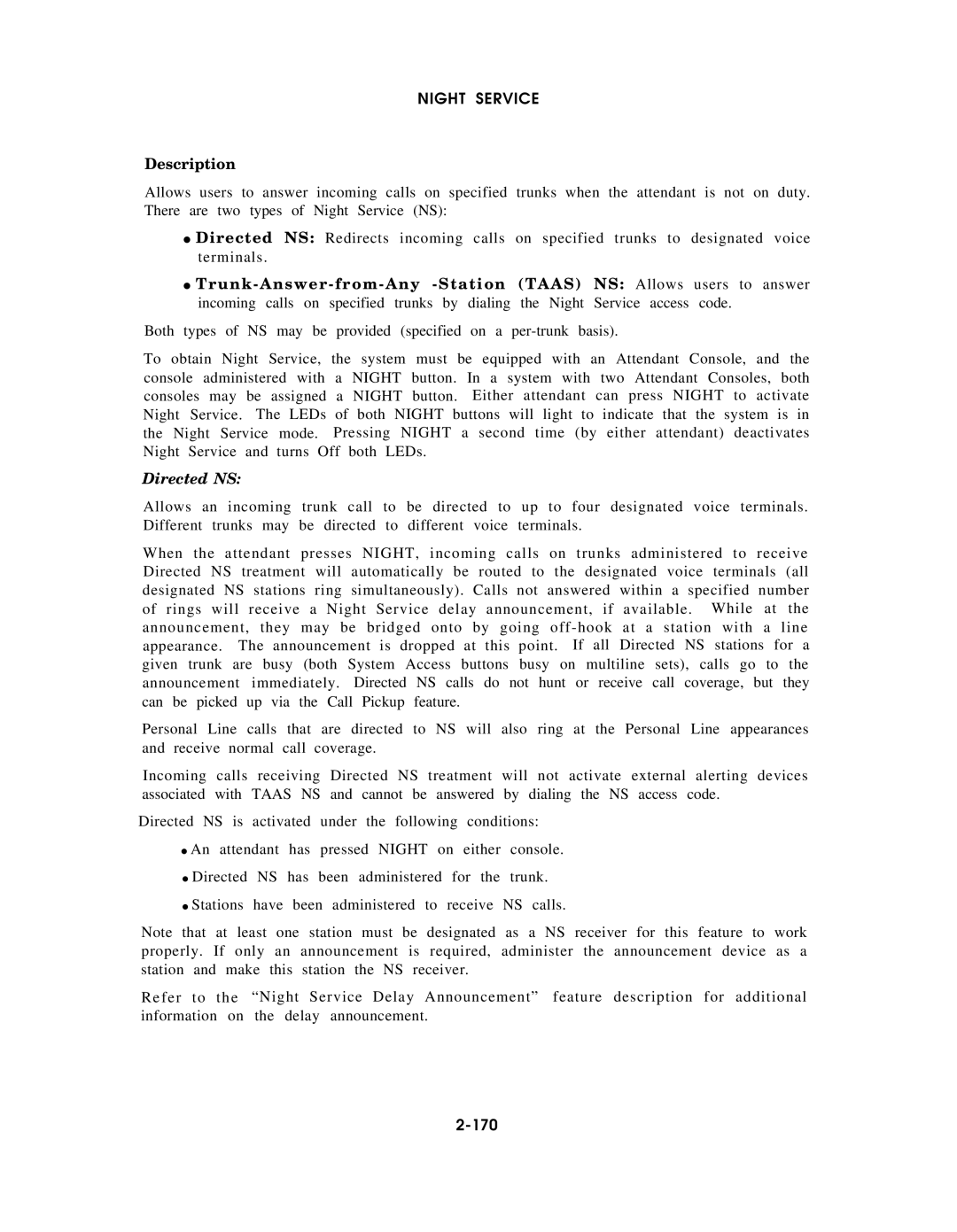NIGHT SERVICE
Description
Allows users to answer incoming calls on specified trunks when the attendant is not on duty. There are two types of Night Service (NS):
●Directed NS: Redirects incoming calls on specified trunks to designated voice terminals.
●
Both types of NS may be provided (specified on a
To obtain Night Service, the system must be equipped with an Attendant Console, and the console administered with a NIGHT button. In a system with two Attendant Consoles, both consoles may be assigned a NIGHT button. Either attendant can press NIGHT to activate Night Service. The LEDs of both NIGHT buttons will light to indicate that the system is in the Night Service mode. Pressing NIGHT a second time (by either attendant) deactivates Night Service and turns Off both LEDs.
Directed NS:
Allows an incoming trunk call to be directed to up to four designated voice terminals. Different trunks may be directed to different voice terminals.
When the attendant presses NIGHT, incoming calls on trunks administered to receive Directed NS treatment will automatically be routed to the designated voice terminals (all designated NS stations ring simultaneously). Calls not answered within a specified number of rings will receive a Night Service delay announcement, if available. While at the announcement, they may be bridged onto by going
Personal Line calls | that | are directed to NS will also ring at the Personal Line appearances |
and receive normal | call | coverage. |
Incoming calls receiving Directed NS treatment will not activate external alerting devices associated with TAAS NS and cannot be answered by dialing the NS access code.
Directed NS is activated under the following conditions:
● An attendant has pressed NIGHT on either console.
● Directed NS has been administered for the trunk.
●Stations have been administered to receive NS calls.
Note that at least one station must be designated as a NS receiver for this feature to work properly. If only an announcement is required, administer the announcement device as a station and make this station the NS receiver.
Refer to th e “Night Service Delay Announcement” feature description for additional information on the delay announcement.
